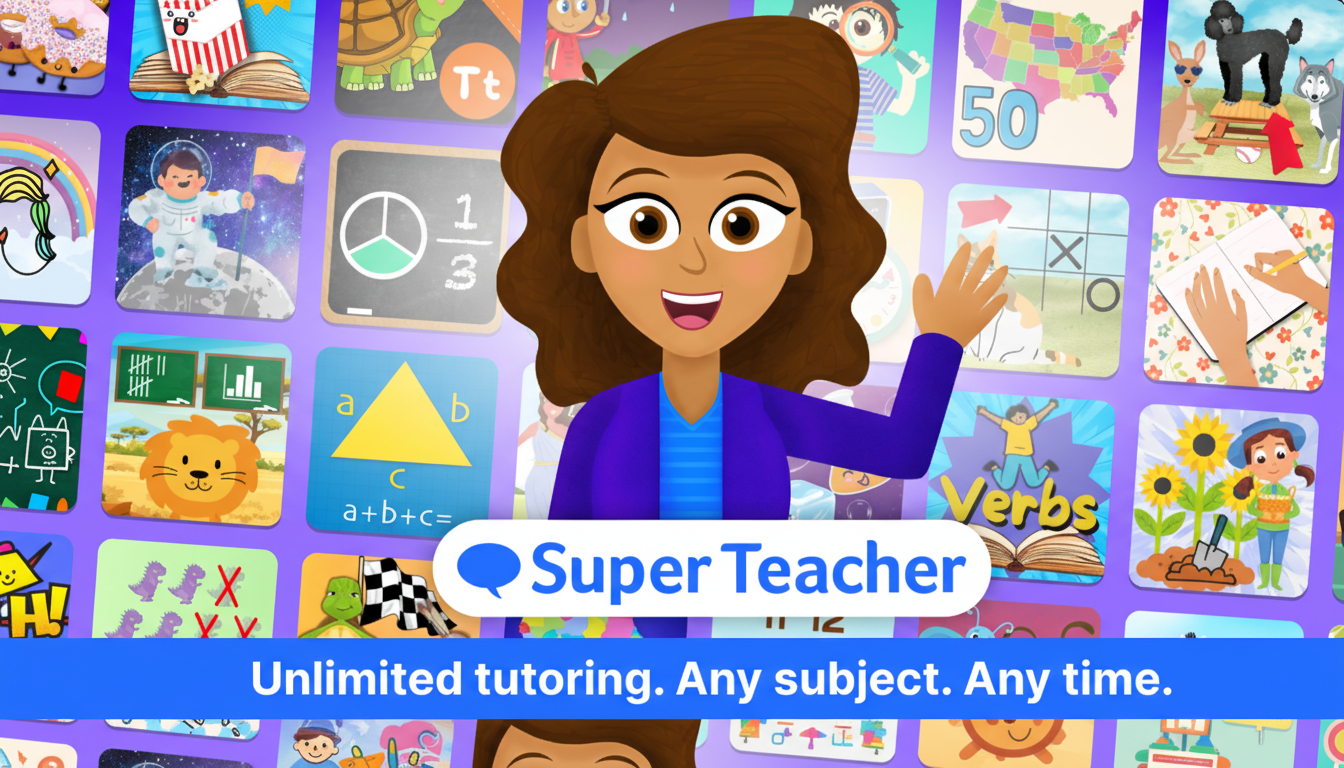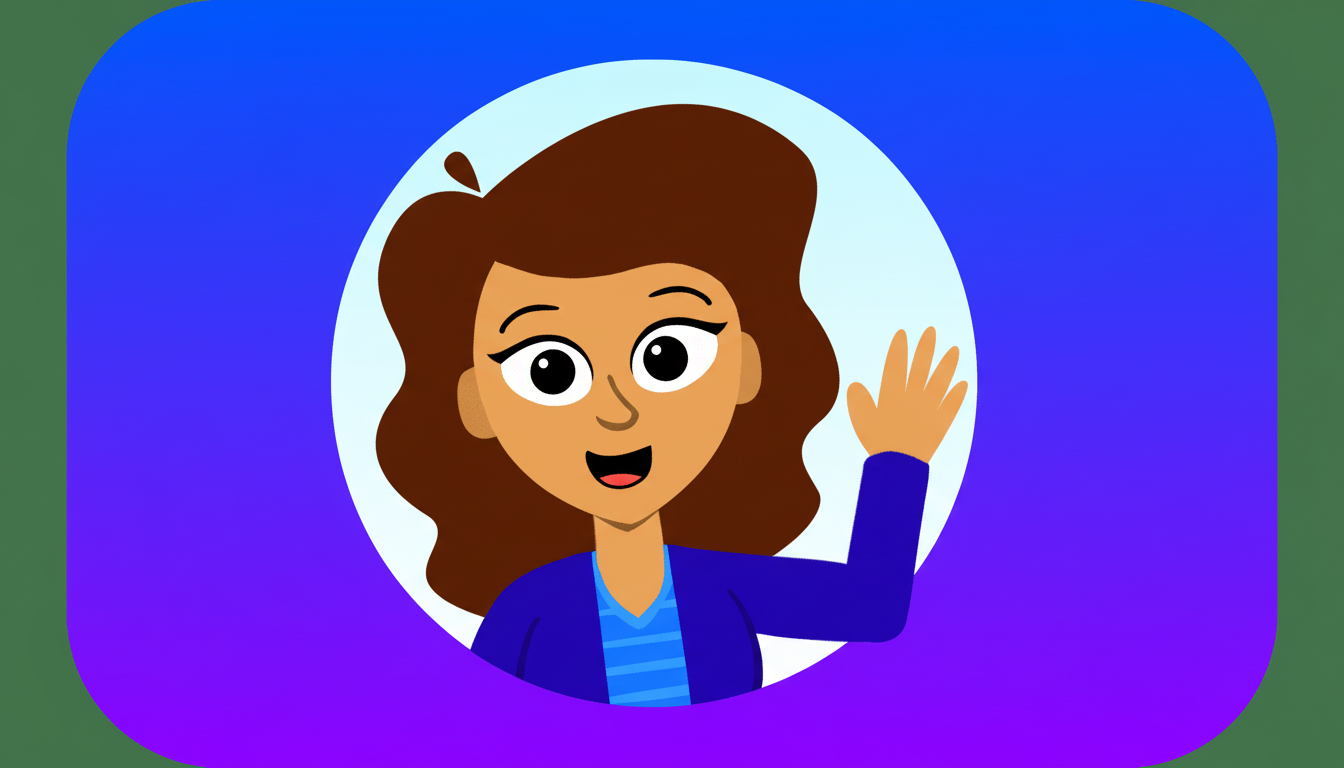The startup, led by former Google product manager and teacher Tim Novikoff, is about to launch an AI tutor designed for elementary school classrooms — with the goal of making one-on-one instruction more cost-effective and scalable.
The company is set to demo the tool live at our Disrupt conference, explaining how an animated, voice-first tutor could deliver high-quality support for young readers and budding mathematicians at a price point families and districts can tolerate.
- Why Elementary Tutoring Must Be Reinvented
- Inside Super Teacher’s AI Tutor for Elementary Students
- A Teacher-First Philosophy for Classroom Integration
- What Schools Will Seek in Early-Grade AI Tutoring Tools
- A Founder With Edtech Chops and Product Experience
- What To See At Disrupt: Live Demo and Research Plans

Why Elementary Tutoring Must Be Reinvented
One of the most effective learning interventions is personalized tutoring, but it is also one of the most unavailable resources. Even when those options are not offered, tutoring is provided to less than 10 percent of students, according to a national survey conducted by the RAND Corporation’s American School District Panel. But experts say there is plenty of evidence that it works. Research compiled by the National Student Support Accelerator at Brown University demonstrates that high-dosage programs consistently produce meaningful gains, but they are also costly to sustain and challenging to staff in large numbers of schools.
That mismatch between what works and what is feasible is particularly stark in the elementary school years, where fundamental reading and math abilities are established and learning gaps can snowball. NAEP results have highlighted ongoing losses in core subjects since the pandemic, and many districts say budget pressures and staffing shortages are making it difficult to maintain small-group or one-on-one supports. Families, meanwhile, are stuck with private tutoring bills that can run hundreds or thousands of dollars a month.
Inside Super Teacher’s AI Tutor for Elementary Students
The app from Super Teacher has animated characters with human-like AI voices that walk kids through conversations just as you would explain something to a patient teacher. Pacing through interactive lessons made with preschoolers in mind, students speak up and receive feedback on their answers. The company’s standout design decision is technical: rather than leaning on large language models to produce answers on the fly, it employs a deterministic system designed to churn out consistent and properly reasoned explanations, avoiding the “hallucinations” that can bedevil generative AI.
The pricing is simple and aggressive by tutoring standards: $15 per month, or $10 if paid annually. That makes it more in line with the price point of a streaming subscription than that of a private tutor, a savvy move for households and for schools considering seat licenses. Today’s content is aimed at the elementary grades, a segment of edtech that tends to get short shrift compared to middle or high school because that’s where you’ll find most of the test-prep-heavy curriculum and the advanced coursework.
A Teacher-First Philosophy for Classroom Integration
Novikoff makes it clear: the tool is intended as an addition to, rather than a substitute for, classroom educators. It’s like a calculator, or an interactive whiteboard: a tool for teachers to use to help them reach further. In practice, that may translate into a station-rotation model during literacy or math blocks, with the AI tutor driving targeted practice while the teacher pulls back a small group. For families, it can mean guided practice at home that jibes with the work in class rather than haphazard drill.
This complementary view, in turn, syncs with the advice the Education Endowment Foundation (which, full disclosure, I once worked for) has long given: that tutoring is most effective when it’s closely related to what is being taught in class, provided frequently and monitored for fidelity. Indeed, as elementary-school students get immediate feedback and repetitive practice in easily digestible chunks, skill progress often spikes.

What Schools Will Seek in Early-Grade AI Tutoring Tools
District leaders reviewing AI tutors usually focus on five areas:
- Evidence of gains in learning
- Content alignment to state standards
- Data privacy and security
- Accessibility for multilingual learners and students with disabilities
- Total cost of ownership
Regulations like COPPA and FERPA define what’s expected in terms of student data, while frameworks such as those published by ISTE and UNESCO encourage age-appropriate design, transparency and protection against bias.
Super Teacher’s system is designed to offer programmed responses, so it may be attractive to administrators leery of free-form generative models at the early grades. At the same time, schools will likely seek hard evidence — preferably from independent studies showing gains in reading fluency and math proficiency, not just such metrics as engagement. Adoption will also depend on integration into classroom routines and teacher pacing and content controls.
A Founder With Edtech Chops and Product Experience
Novikoff was previously the founder of Fly Labs, a mobile video-editing startup that was acquired by Google, where he served as a product lead. That combination of consumer-style polish and product-thinking for AI is reflected in Super Teacher’s focus on natural voice interactions and dependability over novelty. The company also will broaden its catalog to learners who are both younger and older, and seek school systems throughout the country with which it can partner.
What To See At Disrupt: Live Demo and Research Plans
Look forward to:
- Live demos of the conversational tutor
- What the deterministic content engine looks like when authored and updated
- Early signals on district pilots and research design
If Super Teacher can deliver those at affordable prices and back them up with credible evidence and educator-friendly workflow, it could help bridge the gap between what tutoring research promises students and what most actually get.

